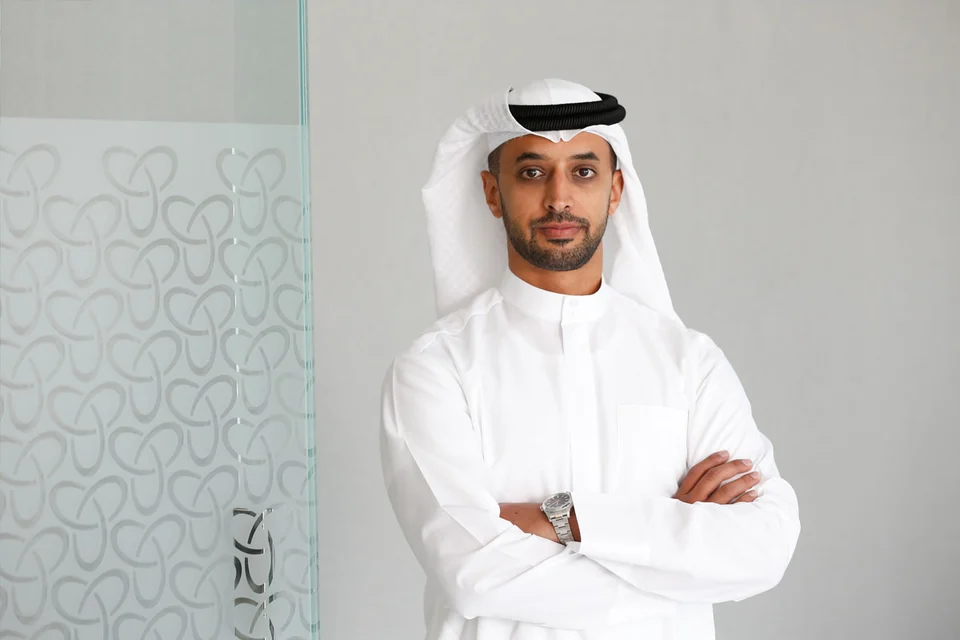
Oman has announced that public revenue for the 2025 budget is projected to reach approximately 11.18 billion Omani Rials (about $29 billion USD). This forecast reflects the government's strategic approach aimed at ensuring its continued fiscal, economic, and social stability. This move demonstrates the Omani government's commitment to maintaining its economic development and public service levels.
Oman's Minister of Finance, Sultan bin Salim al-Habsi, emphasized that the government will continue to focus on improving public finance indicators and achieving fiscal sustainability, while also committing to maintaining spending levels on essential services. He reaffirmed the government's commitment to providing subsidies for electricity, water, wastewater, fuel, basic food items, as well as various social and insurance programs. These commitments are designed to safeguard the basic living needs of the population.
At a media briefing held by the Ministry of Finance in Muscat regarding the 2025 budget, the minister noted that the 2025 national general budget projections were developed in cooperation with relevant departments within the state's administrative apparatus. These projections are based on an average oil price of $60 per barrel, representing a 1.5% increase over the projected revenue for 2024. Oil revenues account for 52% of total revenue, the gas sector contributes 16%, and non-oil revenues make up 32% of total public revenue.
Public expenditure for the 2025 national general budget is projected to be 11.8 billion Omani Rials, an increase of approximately 150 million Omani Rials over the approved public expenditure for 2024. Based on these estimates, the 2025 budget will generate a deficit of approximately 620 million Omani Rials, which will be covered by borrowing 220 million Omani Rials and withdrawing 400 million Omani Rials from reserves. The budget also allocates approximately 5.004 billion Omani Rials for social services, covering areas such as education, health, housing, and social welfare, which is a 4.2% increase over the approved allocation for 2024.
In response to journalists' questions, the minister revealed that the 2025 budget includes funding for the promotion of senior employees from 2015-2016, and that 4,000 positions are expected in the education sector in 2025. Furthermore, to control inflation and keep it at low levels, the 2025 national general budget includes a total of 1.58 billion Omani Rials in subsidy funds. This includes social security programs, subsidies for the electricity sector, and subsidies for the water and wastewater sectors, aimed at stabilizing prices and ensuring the well-being of the population.
To promote the decentralization of development in the governorates, 20 million Omani Rials were allocated to each governorate during the tenth five-year plan, totaling 220 million Omani Rials, as per royal directives. Of this, 147 million Omani Rials have been committed by the end of 2024, representing 68% of the approved amount. The 2025 budget also highlights the continued financing of value-added projects by the Development Bank, with an increase of 80 million Omani Rials in the bank’s capital. The Development Bank had more than 22,000 outstanding loans by the end of 2024, with a portfolio exceeding 277 million Omani Rials as of November 2024, representing a 34% increase in portfolio size compared to the end of June 2023.
Additionally, the (Iskan) program launched in cooperation with the Oman Housing Bank increased the bank’s loan portfolio by 23% by the end of December 2024, totaling more than 855 million Omani Rials. Preliminary data indicates that gross domestic product (GDP) grew by 1.9% at constant prices by the end of the third quarter of 2024, reaching approximately 28.146 billion Omani Rials, compared to 27.632 billion Omani Rials during the same period in 2023. Oman's inflation rate was approximately 0.6% as of November 2024, down from 1.1% during the same period in 2023. This is attributed to government measures aimed at controlling prices, including subsidies for petroleum products, electricity, and water, as well as support for basic commodity prices.
Regarding foreign direct investment (FDI), preliminary data indicates that Oman's FDI reached 26.677 billion Omani Rials by the end of the third quarter of 2024, a 16% increase compared to the same period in 2023. The Deputy Minister of Finance, Abdullah bin Salim al-Harthi, highlighted key financial, economic, and monetary indicators in a subsequent presentation, along with preliminary results for the 2024 national general budget and the 2025 budget, as well as potential financial and economic risks, and initiatives aimed at strengthening the management of the nation's public finances.
Al-Harthi expects Oman's gross domestic product (GDP) to reach approximately 38.39 billion Omani Rials (about $99.7 billion USD) at constant prices by the end of 2024, and approximately 39.426 billion Omani Rials (about $102.4 billion USD) by 2025. The financial and economic objectives of the 2025 budget are to maintain the level of essential social services provided by the government, sustain government subsidies for electricity, water, fuel, and food commodities, support urban development, facilitate greater home ownership for citizens, and continue government-mandated national employment programs, ensuring insurance coverage and equitable social security for all segments of society.
The estimated public expenditure items for 2025 include 8.555 billion Omani Rials in recurrent expenditures, approximately 900 million Omani Rials in development expenditures, and approximately 2.345 billion Omani Rials in contributions and other expenditures, which together account for 20% of total public expenditure. The 2025 national general budget aims to maintain fiscal, economic, and social stability in accordance with the financial framework of the tenth five-year development plan (2021-2025) and Oman Vision 2040, while also achieving a range of economic and social objectives. Approximately 5 billion Omani Rials have been allocated in the 2025 general budget for social and basic sector expenditures, representing a 4.2% increase compared to the approved budget for 2024.
Al-Harthi further explained that expenditures for social and basic sectors account for 42% of the total approved public expenditure for the 2025 budget, with: health accounting for 24%, housing for 9%, social security and welfare for 28%, and education for 39%. Total payments to Omani private sector companies reached 1.631 billion Omani Rials by the end of 2024. In terms of supporting job seekers in the private sector, the approved budget for 2025 allocates approximately 50 million Omani Rials for these initiatives, in addition to a transfer of 1.2% of the value of invoices purchased from the oil and gas sector, government units, and companies affiliated with the Oman Investment Authority.
Regarding the governorate development programs, Al-Harthi emphasized that royal directives have mandated an increase in the financial allocation for each governorate's program from 10 million Omani Rials to 20 million Omani Rials during the tenth five-year development plan. This is to implement strategic plans aimed at promoting sustainable development in the governorates and cities, and to enhance their comparative competitive advantages. Furthermore, preliminary results for the 2024 financial performance show a surplus of approximately 540 million Omani Rials, compared to an estimated deficit of approximately 640 million Omani Rials in the 2024 national general budget.
Total national revenue for 2024 increased to 12.674 billion Omani Rials, exceeding the 11.01 billion Omani Rials approved in the budget for the same year. The average oil price reached $82 per barrel, compared to $60 per barrel in the 2024 budget, while total public expenditure was approximately 12.134 billion Omani Rials, exceeding the approved 11.65 billion Omani Rials. Of the additional fiscal revenue, approximately 468 million Omani Rials were allocated to increase social spending and stimulate economic growth. This funding was allocated to petroleum product subsidies, support for the electricity, water, wastewater, and waste sectors, increased allocations by the Ministry of Social Development for low-income families and social security beneficiaries, budgets for the health and education sectors to accommodate expanding services, and the exemption of 532 loans from the SME Development Bank and the SME Development Authority for 2024.
Al-Harthi noted that Oman's public debt situation has seen positive progress due to the government's continuous implementation of various measures and initiatives that have helped rationalize and increase the efficiency of spending, increase non-oil government revenues, and benefit from rising oil prices. This has made it possible to allocate a portion of the additional revenues to reduce public debt and replace high-cost government loans with more economical options. The Ministry of Finance is committed to fulfilling public debt obligations according to the approved borrowing plan, including repaying 355 million Omani Rials in external loans before their due date, repaying 600 million Omani Rials in maturing government development and local bonds, and issuing 705 million Omani Rials in government development and Ijara bonds according to the approved borrowing plan. Preliminary results for the 2024 financial performance indicate a reduction in public debt of approximately 800 million Omani Rials, from 15.2 billion Omani Rials at the beginning of 2024 to 14.4 billion Omani Rials. The ratio of public debt to GDP has decreased to 34%, and the cost of public debt servicing has decreased to approximately 940 million Omani Rials, compared to approximately 1.05 billion Omani Rials in the approved budget for 2024.
The Deputy Minister of Finance, Abdullah bin Salim al-Harthi, confirmed that the ministry will begin a trial run of the unified government financial system "Maliya" in certain government agencies, with the goal of actual implementation at the beginning of 2026, coinciding with the launch of the eleventh five-year development plan, and completion by 2030. This new system will establish a unified government portal for all supporting financial systems, representing a modernized electronic approach by the Sultanate of Oman to managing public finances for planning, executing, monitoring, and reporting on matters related to the national general budget, with the aim of strengthening public finance management in accordance with Oman Vision 2040.




















